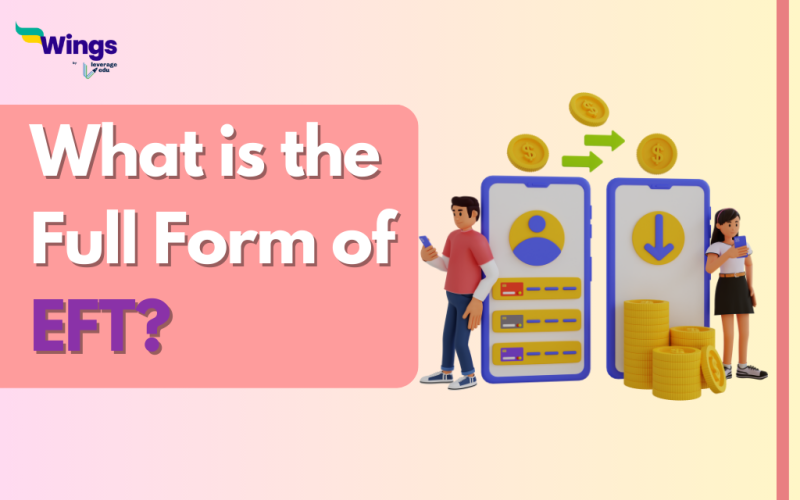EFT Full Form: EFT stands for Electronic Funds Transfer. It is a payment method that allows a user of one bank to move money from their account to another. It is also known as a direct deposit since it transfers the money straight into the receiver’s account without the need for any physical, such as paperwork and cheques, and because it is easily accessible.
Table of Contents [show]
Highlights of EFT
- A minor fee is usually levied to process the payment over a window, and big sums are charged upon transfer.
- All you need to make an EFT payment is your bank information and the receiver’s bank information.
- You cannot cancel an ETF payment once you’ve started it by clicking Proceed after inputting your bank information.
Types of EFT
The different types of EFT include:
- ACH payment or ACH direct deposits
- Global ACH (like SEPA payments in the EU)
- Wire transfers
- eCommerce transactions
- Point of sale (POS) transactions
- Credit card or debit card transactions
- Peer-to-peer payments
- Phone-initiated funds transfers, and
- ATM (automated teller machine) transactions.
Benefits of EFT
After we’ve defined EFT in banking, let’s look at some of its most notable advantages. The most obvious ones are as follows:
- 24 x 7 Availability
- Real-Time Transfers
- Nation-wide accessibility
- Zero Cost
- Versatile Payment System
How Long Does an EFT Take?
The length of time it takes to complete an electronic funds transfer, including the receiving of funds by the payee, is determined by the kind of EFT.
Some EFTs, for example, can be performed instantly using peer-to-peer networks. In the United States, ACH transactions are executed the same or the following business day. Domestic wire transfers in the United States can be accomplished within 24 hours. International wire transfers might take anything from three to five days.
What is EFTA?
The Electronic Funds Transfer Act (EFTA) is a piece of U.S. legislation enacted in 1978 to protect individual customers in a variety of electronic funds transactions and to specify the duties and obligations of all parties involved. The Federal Reserve Board implements EFTA through Regulation E.
Conclusion
You can use this service for your normal banking operations now that you understand what ETF payment means. ETFs are a time and money-saving tool. With the help of an internet-enabled device such as a smartphone or computer, you may initiate practically any type of transaction with the press of a few buttons. But do remember to be cautious when completing an electronic financial transaction. Protect your PIN and only transfer and receive money using apps you trust. Regularly review your bank and credit card statements to detect potential fraud and reduce your liability.
Must Read: Things to Consider when Transferring Money Abroad
Must Read: Best International Money Transfer Apps in 2023
This was all about EFT Full Form. Visit the General Knowledge page to discover more intriguing articles about full forms. Get in touch with the experts at Leverage Edu in order to kickstart your study abroad journey.
 One app for all your study abroad needs
One app for all your study abroad needs















 45,000+ students trusted us with their dreams. Take the first step today!
45,000+ students trusted us with their dreams. Take the first step today!
